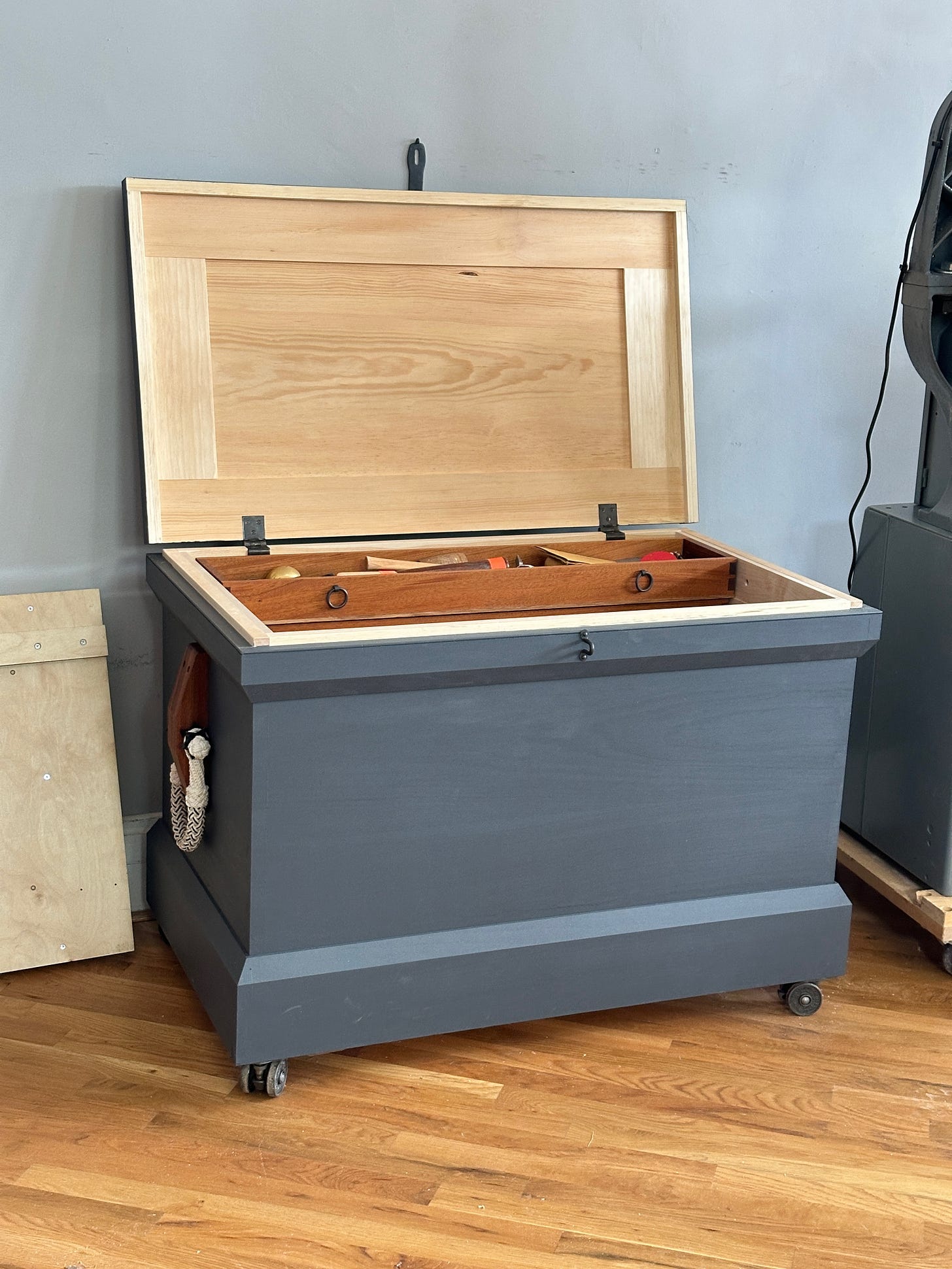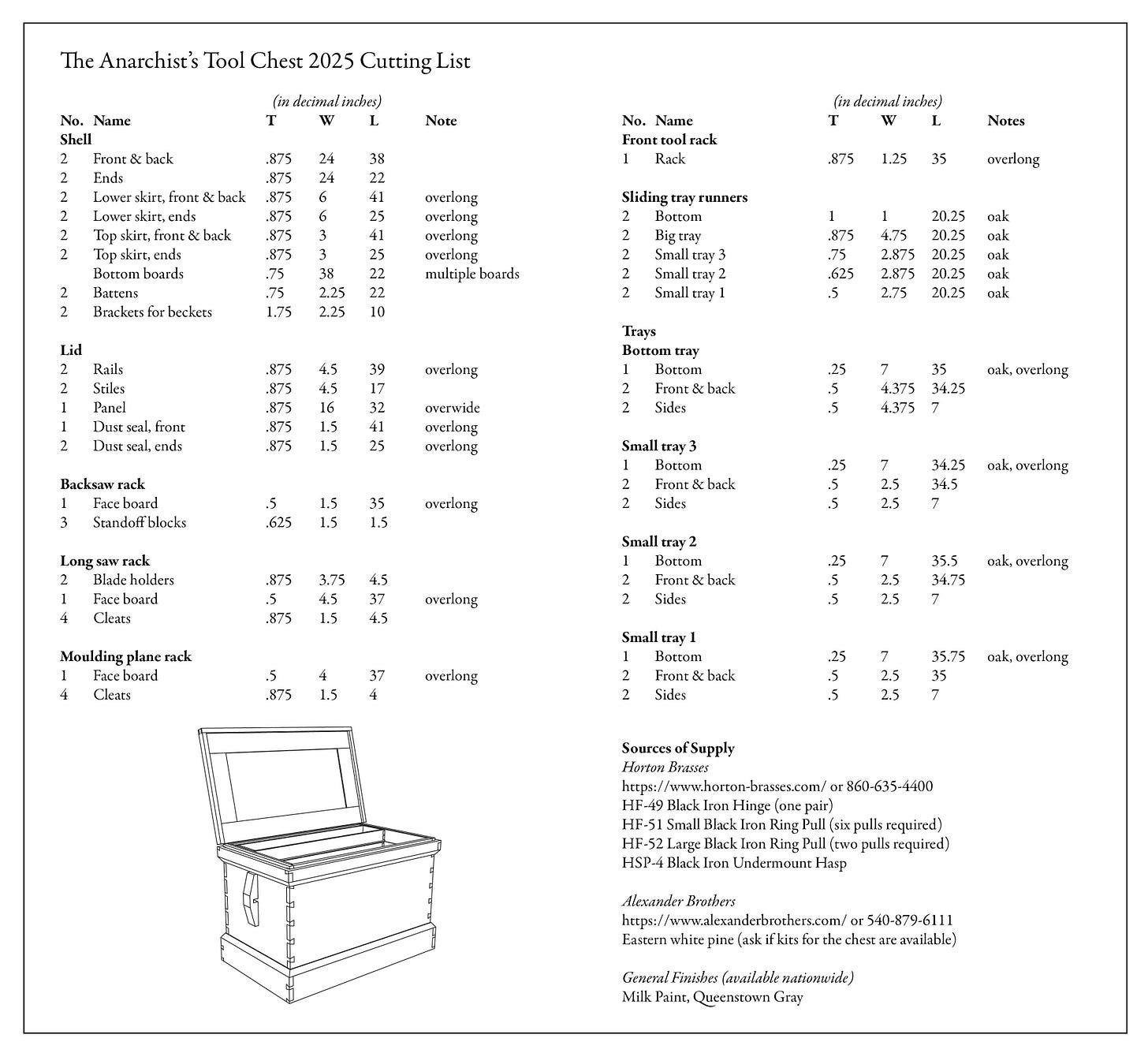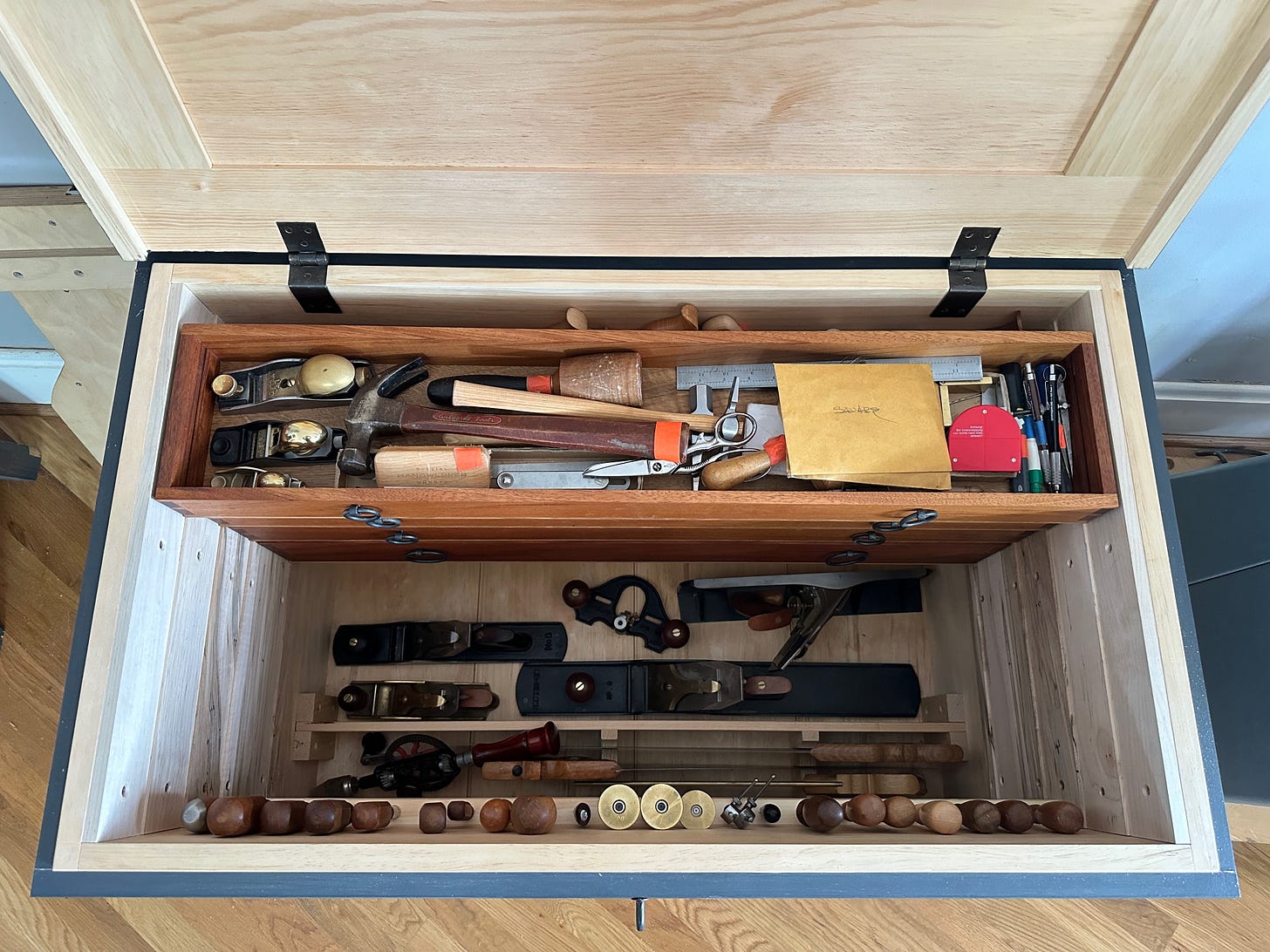Preview Some of the Goodies in the Revised ‘Anarchist’s Tool Chest’
My personal tool inventory, cutting lists, drawings and details on how the new book hopes to eclipse the old.
Most book revisions are a cash grab by publishers and a disappointment to readers. Here’s how it works: A popular book saturates the market, and after a long run, sales decline to the point where the book isn’t worth reprinting.
So the publisher asks the author to “revise” the old boy so they can re-release the title and tempt fans to buy it again. Even though I know the game, I have fallen victim to this ploy a hundred times, both with books and music. Expanded anniversary edition? Cash grab. Remastered albums? Total cash grab. Updated for 2025? Ditto.
The “revisions” are usually minor and not worth doing (except for the paycheck).
When I decided to revise “The Anarchist’s Tool Chest,” I vowed to put as much work into the new book as I did the old. And to give the new book away free forever as a pdf download for everyone (no scammy registering or giving up your email). Just like the old (and my other books).
No one needs to buy anything to get the new information.
And – finally – I wanted to keep the price of the physical book the same, while upgrading its paper and manufacturing specifications. This was a trick. Here’s how we did it (if you don’t give a hoot, just skip to the next subheading).
The original book was printed on 60# natural smooth paper.1 It’s a good paper – readable, reasonably priced and better than what is in most black-and-white books. For the revised edition, we’re switching to 80# Cougar super smooth white. I love this paper (the only paper I love more is Mohawk superfine). It has zero sheen. It reproduces inks beautifully with crisp lines and deep blacks. It is expensive.
So I sold a lung. No. I did a few other things. I redesigned the entire book in Garamond type, which is much more readable than the original Cochin type. And I tightened up the leading between the lines of type. The result is far more readable, especially for older eyes. And I reduced the book’s page count to 384 (down from 496) without cutting a word of text. That saved most of the money.
Also, we’re printing it on a sheet-feed press that can make 32-page signatures (instead of 16-page or 8-page signatures). That means fewer pages through the press, and some more savings. The only thing I had to give up in order to use the 32-page signatures was the full bleeds on the opening spreads of the chapters.
Oh, and I beefed up the book’s endsheets (the hinge between the hardback boards and the book block) and we’re printing stuff on those endsheets.
Bottom line, this book is going to be incredibly nice, even our printer is eager to see it come together. And it will cost exactly the same as the old book.2
For the Paid Subscribers to the Substack
When the book is sent to press, paid subscribers will all receive a pdf of the revised edition, months ahead of its public release. Look for that next weekend, I hope. And below the paywall is a complete inventory of my chest with tool brand names and commentary – another new addition to the new book.
I hesitated to make this list because the point of the book is to find your own set of tools. Not to copy mine. But my tool set is the result of 28 years of hard work – the same work I ask others to do. So I am happy to share it.
Before we get to that, below are the endsheets of the book. The front endsheet shows some of the construction details of the 2025 chest. The rear endsheet is a cutting list of the 2025 chest and a list of sources of supply.3
Here they are:
You can download a pdf of the endsheets to print them out using this link:
So here is the complete inventory of the chest as of Thursday.
Keep reading with a 7-day free trial
Subscribe to The American Peasant to keep reading this post and get 7 days of free access to the full post archives.





